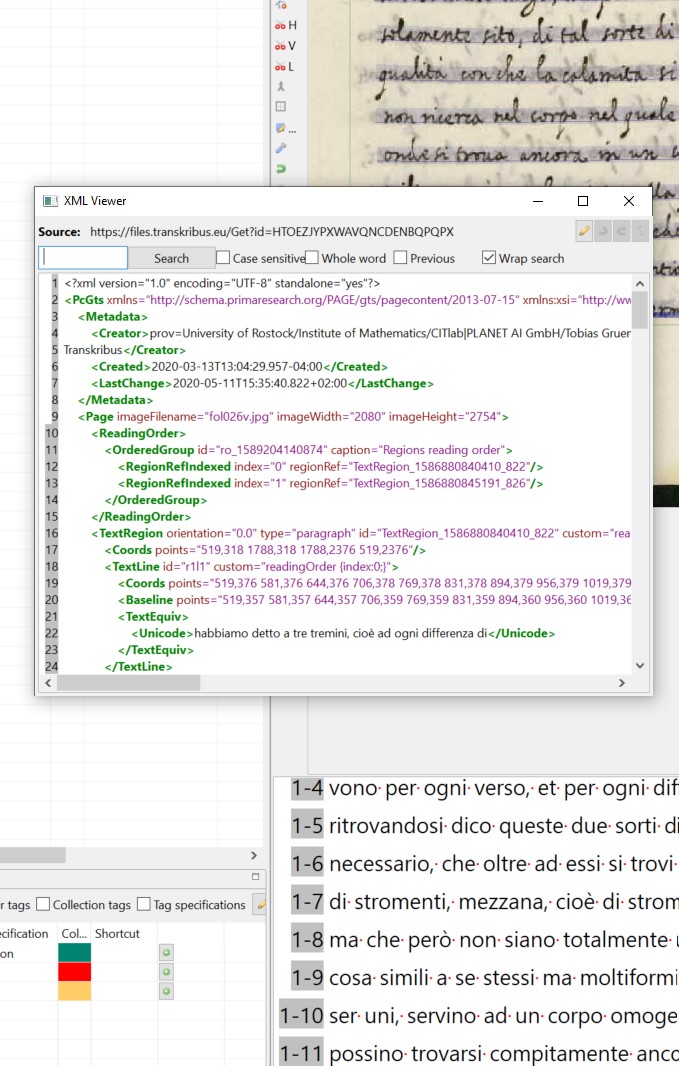Documentation
 |
This website is hosted on Github.
All
transcriptions were made with the help of the tool Transkribus.
For
handwritten material, all text was transcribed manually (see credits).
For early-modern prints, the HTR model Noscemus
was used, but the
result was corrected manually. A fully searchable interface is provided
on read&search.
|
A simplified Map of the Data and the Tools |
|
|
Rara Magnetica comprises three layers. A semantic layer relates to works as carries of ideas, consisting of text and images.
A material layer related to the concrete manifestations of works, i.e. the unique copies of printed editions that may carry readers' annotations.
The social layer connects the two layers: Persons in different roles and capacities created the conceptual and physical objects that have been mentioned.
The data underlying the three layers is stored in different formats and with different metadata, depending on their nature and established standards. The user perspective is reflected by the use of different tools and platforms to enter and to visualize and explore the data. |
|